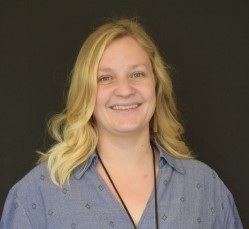The Next Generation Science Standards have shifted traditional classroom lessons to three-dimensional teaching and learning. Many of our blogs have begun to dig into the specifics of what three-dimensional teaching and learning is and what it looks like. Today, we are focusing on the dimension related to inquiry- the Science and Engineering Practices or SEPs.
 Besides the content or Disciplinary Core Ideas, the SEPs are probably the most familiar to teachers. This dimension is the “doing” of science. There are 8 practices in all and many align with what we typically recall as being the scientific method. There are a few new pieces though, including modeling and engaging in argument from evidence. These two dimensions, while something new to wrap your head around, are two of the best dimensions in terms of facilitating sense-making with your students.
Besides the content or Disciplinary Core Ideas, the SEPs are probably the most familiar to teachers. This dimension is the “doing” of science. There are 8 practices in all and many align with what we typically recall as being the scientific method. There are a few new pieces though, including modeling and engaging in argument from evidence. These two dimensions, while something new to wrap your head around, are two of the best dimensions in terms of facilitating sense-making with your students.
Many districts, as a way to ease teachers into the NGSS, suggested that their teachers start by incorporating the Science and Engineering Practices. Others might have chosen to begin with the SEPs because it is easy to gauge if your students are doing them or not. Either way, you might have asked yourself, “where do I start?”. One of our favorite documents for answering that question is Appendix F, part of the NGSS appendices, conveniently wrapped into a matrix by NSTA and can be found here. The best place to start is to become familiar with what the SEPs look like at your grade level. Asking questions and defining problems looks very different for a kindergartener compared to a 9th grader.
Once you spend some time with your grade band expectations, you can start to envision how that would unfold in your classroom. We often suggest taking some time to talk through a SEP with a grade level colleague and brainstorm specific ways to have your students engage with it.
For example, if you were looking at a fifth grade content standard regarding Earth and Space Science, you might want to encourage your students to make a model of the Sun, Moon, Earth, system. This would help to demonstrate the following DCI:
ESS1.B: Earth and the Solar System
- The orbits of Earth around the sun and of the moon around Earth, together with the rotation of Earth about an axis between its North and South poles, cause observable patterns. These include day and night; daily changes in the length and direction of shadows; and different positions of the sun, moon, and stars at different times of the day, month, and year.
Because the focus of this DCI is to look at patterns, the focus will be less on the causal mechanism and rather just what happens. If you look at the aforementioned matrix, you will see that at the 3-5 grade level, students should “identify limitations of a model”. You could encourage your students to keep a journal or draw pictures of the moon and sun over consecutive days/nights and then compare it to what they saw in their system model they developed in class. This would demonstrate the similarities and differences between a human developed model and the actual object or process.
Don’t forget the usefulness of a performance expectation (PE) either. A while ago, we posted a blog explaining what a PE is, if you need a refresher, check that out here. While it can be great to choose your own SEP, DCI, CCC combination, the NGSS does it for you when thinking about what your students should be able to be assessed on. So while it doesn’t always mean that the particular SEP has to go with that DCI, it can take some of the guesswork out of it if you’re designing your own lessons.
Still have questions? Check in with our Educator Hub on Facebook! Many of your colleagues have struggled with the same things and are always happy to provide a suggestion as well as the Professional Learning Specialists with the Mandell Academy.

Lindsey Sullivan is a Professional Learning Specialist at the Connecticut Science Center’s Mandell Academy for Teachers. Before joining the Mandell Academy, Lindsey was a high school science teacher. Currently, Lindsey supports educators as they make sense of NGSS through her facilitation of workshops offered by the Mandell Academy as well as providing coaching support in schools.
